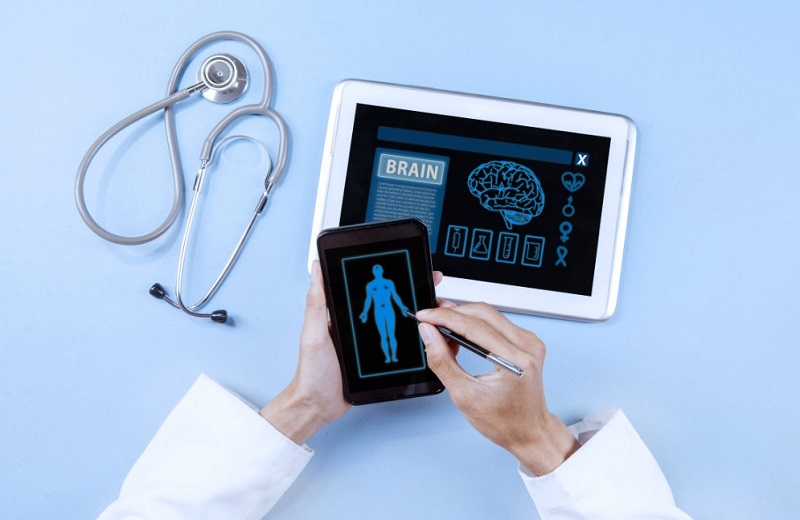The world is growing increasingly uncomfortable with the direction that automation is taking. As AI and robotics become better, it seems that fewer and fewer jobs seem safe. While medicine is one field that has been uniquely human for the entirety of our history, it too is being disrupted by the emergence of new technologies.
Are these developments for better or for worse? In this article, we try to answer that question by taking a look at three emerging technologies, and what impact they might have on patient care and costs.
Bring in the robots?
Robot nurses are advanced machines designed to assist healthcare professionals in delivering patient care. These robotic assistants have the potential to revolutionize the healthcare industry by easing the burden on human nurses, enhancing efficiency, and improving patient outcomes.
The development of robot nurses is an ongoing process, and some prototypes and early versions are already being tested in healthcare settings. However, widespread availability on a global scale may take several more years of refinement and regulatory approval— not to mention a hearty embrace from a public who may have very valid concerns about handing their care needs over to a machine.
That said, it’s worth noting that robotic nurses as they are presently conceived would not be capable of fully replacing humans. They will primarily be used to handle repetitive tasks like taking vitals. The idea is that this will give human nurses more time to handle the complex elements of their work. This could also have the effect of reducing staffing requirements in hospitals.
While staff reduction is generally a negative, it is worth remembering that most hospitals don’t have enough nurses to go around as it is.
That said, there are also very legitimate concerns around the introduction of robotic nurses. For one thing, while they may not currently be capable of replacing human labor, what about ten, fifteen, or twenty years from now?
The introduction of robots into a profession once seen as the exclusive domain of humans could create a significant and irreversible shift in the workforce.
There is also just the risk of losing the human element of healthcare. Nurses are so much more than just providers of medicine. They advocate for their patients and establish relationships with them. Losing that dynamic could have a very real impact on patient outcomes.
It Doesn’t Stop with Nurses
Nurses aren’t the only ones who will need to cope with the idea of one day in the not-so-distant future being replaced by a machine. It turns out the robots have also set their sights on surgeons.
Robotic surgical equipment has been in development for several years, and some systems, such as the da Vinci Surgical System, have already been widely used in various surgical specialties like urology, gynecology, and general surgery. Continued advancements in technology and ongoing research are likely to lead to more sophisticated and versatile robotic surgical systems in the future.
The key advantage of robotic surgical equipment lies in its ability to perform intricate procedures with greater precision than traditional methods, reducing the risk of complications and improving patient outcomes. Robots make much smaller cuts than human surgeons. This results in less pain, faster recovery, and shorter hospitalization (which, of course, has very significant cost-saving benefits for the patient and the hospital).
Of course, as with robotic nurses, robot surgeons aren’t a perfect proposition. For one thing, the cost of the equipment is significant— both in terms of acquisition and upkeep. A da Vinci robot costs around $2 million—and that doesn’t include upkeep costs, nor the expense of the surgeon who still needs to operate it.
Again, there’s also just that intrinsic risk of removing humans from the equation of human healthcare. While surgeons don’t develop the same bonds with their patients that nurses do, they are caring advocates for the people they take care of. Are machines capable of replicating that dynamic in a way that is satisfying for patients?
Only time will tell.
Remote Patient Monitoring
Patient monitoring is now easier and more effective than ever. From Fitbits to other, more complex forms of wearable health technology, there are now more ways than ever for patients to have a keen and comprehensive understanding of their health.
The benefits of these devices are many. For one thing, they automatically produce constant feedback that otherwise would have only been possible with a trip to the doctor’s office. Patients who used to only ever have their heart rate taken once every other year can now have it documented every moment of the day thanks to their fitness trackers.
This information has already been used to instigate lifesaving medical interventions and help for those who live in rural areas.
For people with serious medical conditions, the advent of wearable remote health technology is even more important.
Meet Abby. Abby lived a normal life until the age of 25 when she was diagnosed unexpectedly with Type 1 diabetes. Diabetes is hard to manage for everyone, but she’s bright enough. A nurse, actually, and one who hasn’t been replaced by a robot. Yet.
So she knows how to take care of herself. But what about at night, when her blood sugar sometimes dips to dangerously low levels?
When diabetics experience blood sugar fluctuations at night it can be very dangerous because they are often unable to wake up and take care of their needs.
Thanks to Abby’s mobile glucose monitor, there is a solution to this problem. Two months into her diagnosis, the monitor goes off at midnight. Abby, feeling groggy from her diminished stores of glucose, is not awoken by the alarm.
Her mother is.
No, Mom doesn’t still live with her grown daughter. She received the update in the form of a text message that the glucose monitor sent out, alerting her to the problem. Thanks to that message, Mom is able to help Abby get what she needs.
There are similar technologies available for people with heart or respiratory conditions. In an era of remote patient monitoring, life-saving medical intervention is now more accessible than ever.
Conclusion
So, are these technologies improving the capacity for patient care? It’s hard to say. There are gains, to be sure. More accurate surgeons and nurses will create improved outcomes. Those better outcomes will reduce hospital stays and have very real savings for the patients impacted.
But do we want to live in a world without human nurses and doctors? That scenario is still far into the future, but as robots and AI get better, it is becoming increasingly more feasible. That’s bad for the people who are losing their jobs, but it also may impact the ultimate quality of care that humans are eligible to receive.
Robot doctors are cool in Star Wars. In real life, they may lack the essential human quality that imbues healthcare with compassion and optimism.





